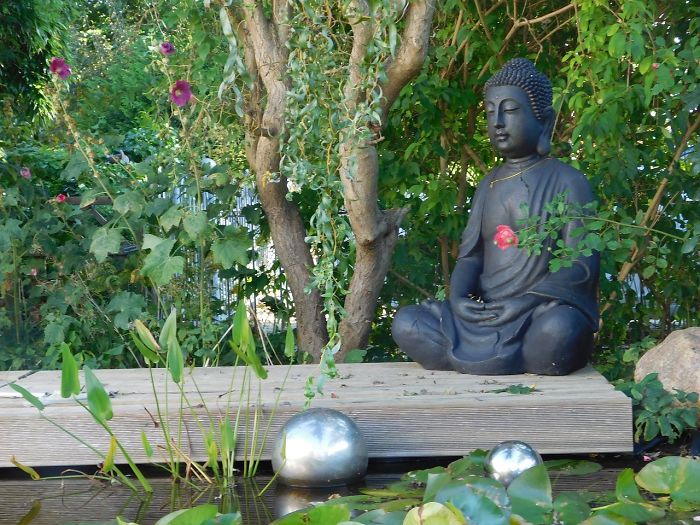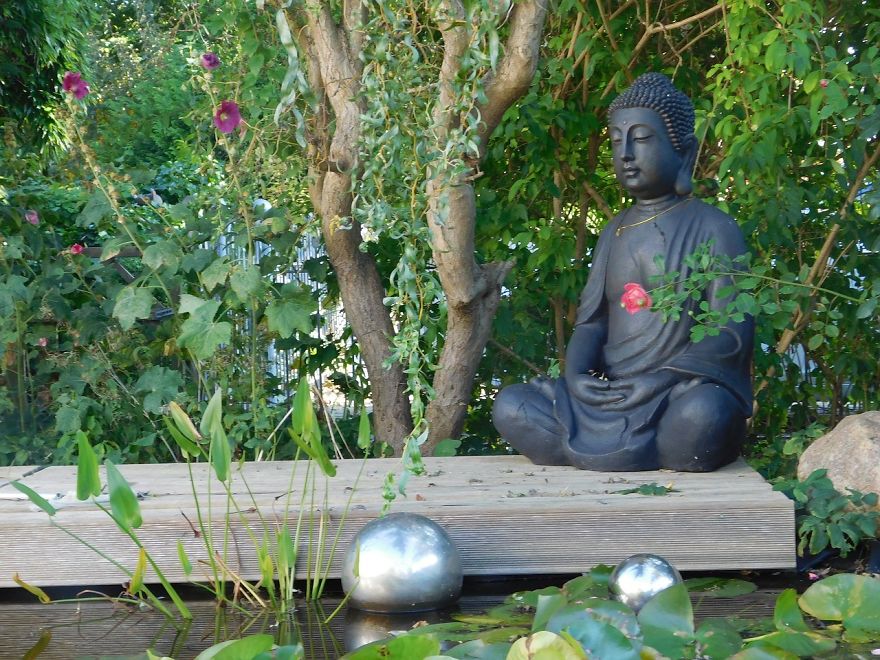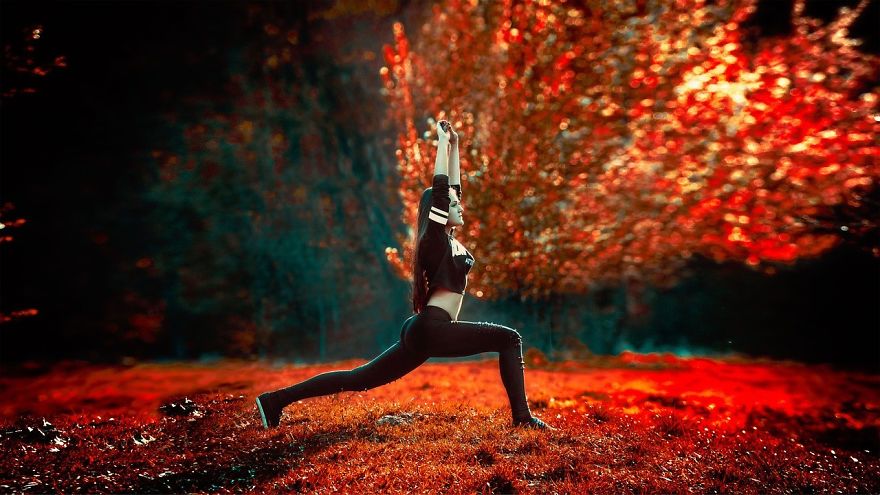Many people cannot imagine their lives without regular yoga sessions. Some of them also feel the urge to reconnect with the great outdoors instead of locking themselves inside. This rising trend reminds us that the stillness of yoga and a calming presence of nature are a match made in heaven. After all, one of the most vital relationships that this ancient practice strengthens is one between the body and the environment. So, it is time to put together a captivating outdoor sanctuary, elevate the spirit, and embark on a spiritual journey.
Finding a little piece of heaven
First off, you need to designate a perfect spot for quiet contemplation. Naturally, it all depends on the size and layout of the garden, but there are some general rules of thumb to follow. It is best to have your garden partially sheltered (but not claustrophobic): out of the wind and exposed to rejuvenating sunlight. Speaking of which, an ideal scenario is to have sunlight coming from the east or the southeast. And when it comes to the sheltered nature of your toga shrine, it is a good idea to have a wall, a hedge, or a plant bed providing a sense of nurturing protection.
Nature’s embrace
Another benefit of this shelter is that you have a flourishing landscape around you. It snuggles you up and acts as a green buffer. So, start fleshing out your yoga garden by adding textured green plants to your surroundings. Note that it is possible to go bigger rather than just go infusing a splash of greenery here and there. Also, do not fret if you do not have enough space to accommodate large flower beds and gardens. A green vertical garden is a highly practical solution and a spectacle to behold. Moreover, it offers much-needed privacy, as well as the protection from the elements.
Plants galore
If you want to adhere to the ideal proportions of Zen gardens, have two-thirds of the garden planted with evergreens and one-third with deciduous plants. Some of the most common plants one sees these days are Japanese forest grass, oak leaf hydrangea, sunset glow, flowering dogwood, etc. Certain trees, such as oak, also provide similar benefits and induce a feeling of strength and stability. Feel free to add plenty of potted plants as well. Just remember to maintain an open, airy feel without too much shade preventing you from soaking in the sun.
Delightful elements
Furthermore, you should introduce the elements that warm your heart with joy and boost the overall appeal of the garden. For instance, install a small fountain nearby and hear the water’s trickling. A recirculating water feature like tsukubai is a true bliss. This Japanese staple, which has a gravel base and a bamboo spout, is effective in blocking out the noise. Additionally, you can summon nature’s grounding presence with large rocks and stone sculptures. Ancient cultures used them to ground and soothe their souls and we can do the same in our backyards.
Leaving a personal mark
Finally, add personal touches to make the space truly your own and to permeate a feeling of mindfulness, belonging, and healing. This can take the form of an inspiring artwork, DIY creations, or the outdoor lights that illuminate the garden in the evening. Bear in mind that blue and green are the colors that ooze restfulness and calm— which is why they are always a welcoming addition to a yoga garden. Ultimately, you can include anything that floats your boat without the risk of rolling it over.
Make the magic happen
To take your practice outside and find refugee from a constant sensory overload, you do not have to walk thousand miles. Just step outside into your garden. Creating a yoga garden does not have to be expensive and time-consuming. The key is to understand that it is a profoundly personal process, one of self-discovery. So, immerse in your serene oasis of tranquility and renewal amidst a boisterous urban setting. Get in tune with your body and greet the morning sun. Immerse in the pure moments of magic in your life.






1
0